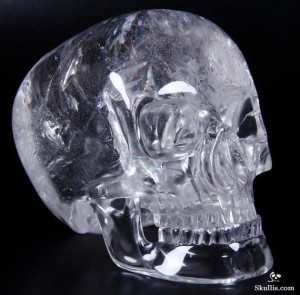 I first heard the story of the mysterious crystal skulls when I was a kid in the 1970s through the television program In Search Of… Joseph Laycock has written an essay on them for Material Religion: The Journal of Objects, Art and Belief, Volume 11, Issue 2 (2015) titled “The controversial history of the crystal skulls: a case study in interpretive drift”. The abstract:
I first heard the story of the mysterious crystal skulls when I was a kid in the 1970s through the television program In Search Of… Joseph Laycock has written an essay on them for Material Religion: The Journal of Objects, Art and Belief, Volume 11, Issue 2 (2015) titled “The controversial history of the crystal skulls: a case study in interpretive drift”. The abstract:
In the nineteenth century, several skulls carved from rock crystal appeared in the holdings of European collectors. The provenance of the skulls was unknown and experts regarded them as pre-Columbian artifacts. In the twentieth century, two very different histories formed about these objects. Through testing and archival research, forensic experts and curators concluded that the skulls were created in the nineteenth century using European technology. Conversely, a community of skull enthusiasts believes the skulls are thousands of years old and function as a sort of esoteric computer. They believe that by communing with crystal skulls, it is possible to access records of ancient civilizations. The skull enthusiasts have strongly resisted the findings of experts. This article applies Tanya Luhrmann’s theory of “interpretive drift” to examine how the skull enthusiasts were able to construct and invest in a mythology surrounding these objects in only a few decades. This case study suggests that material objects can serve an important role in forming the types of magical worldviews outlined by Luhrmann.





There are no responses yet